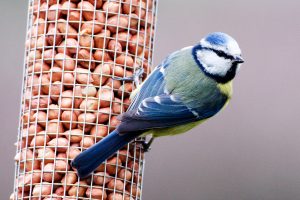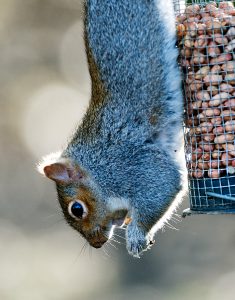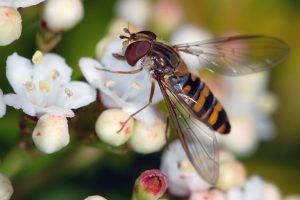Being stuck at home during lockdown could be a golden opportunity to reset your connection with nature say ecologists Mark Fellowes and Ian Rotherham. If you’re lucky, you’ll still have access to a garden. Over 85% of homes in the UK have one, but if you don’t, hopefully there’s a park nearby. Take time to just sit, watch and learn.

Gardens and parks provide a tremendous resource for biodiversity, and they’re perfect places to observe and reflect on nature. Start with birds. Globally, around a fifth of all bird species are found in urban areas, and they are the entry drug to a world of natural history wonder. Almost half of UK households feed birds at some point, and they spend around £250 million doing this each year. It’s not just blue tits and robins either. In Reading, we found that around one in 20 households have enticed red kites into gardens with offerings of meat, bringing a bird of prey that was once almost extinct into the heart of British domestic life.
Most of us learn the names of common species but why stop there? Citizen scientists collecting data are often central to research. Indoor bird watchers have helped reveal the inner lives of garden birds, and there are ample opportunities for budding urban naturalists to do the same for butterflies, hedgehogs, toads and frogs.
Spring into nature
Early spring is a very good time to start. Chiffchaffs, among the first spring migrants to the UK, have arrived from southern Europe, and the peak bird migration period is about to begin. The earliest butterflies have emerged. The sulphur yellow brimstone is perhaps easiest to spot as it patrols gardens, while queen bumblebees busy themselves with nest building. The dawn chorus is building, and the sparse morning traffic means that blackbird, great tit and robin songs can be better heard. Wood pigeons and collared doves are collecting nesting material and blue tits are exploring nest boxes.
If you can get out, why not tend your garden so that it benefits wildlife? A report published in 2017 suggested that gardening helped reduce symptoms of stress, anxiety and depression. Recent research suggested that for every £1 spent on promoting contact with nature for people suffering from mental health issues, there was a social return valued at almost £7. An interest in nature pays dividends.
But it is not just adults who benefit from immersion in nature. Younger people are increasingly disconnected from nature, with one 2002 study showing that children could identify more Pokémon than local wildlife. Children with a greater connection with nature tend to be happier. Encourage an interest in nature among children and learn together.
There are many questions we could ask ourselves to better understand how our own lives interact with the environment. Are our pet cats taking in the sun, or hunting? Where are the house sparrows, and why are they less common? How can we encourage them back? How does urban noise affect bird song?
Keep going – some of the greatest insights into animal behaviour have come from watching garden birds. British biologist David Lack’s seminal 1940s studies of robins showed how their territorial aggression can be triggered by a golf ball sized clump of red material. Nick Davies’ work on dunnocks (an often overlooked garden bird) in Cambridge University’s Botanic Garden revealed their fluid relationships, where anything goes, from monogamy to polyandry and polygyny. Clearly there is much to learn from the species we tend to overlook.

We increasingly experience the natural world through a glass, darkly. Study after study promotes the physical and emotional benefits of engaging with the natural world. At the very least, gaze out the window. Embrace the moment to connect with a different pace of life. Breathe. During this lockdown, you are prescribed a dose of garden nature, taken daily, as needed.
Top tips
- If you have bird feeders, observe and record the number of bird species (there are online guides that can help) on the different feeders. Try to track when they feed and for how long. You can easily build a nature diary that can be shared online too. If you don’t have bird feeders then simply watch what’s flying overhead – I spotted a hundred pink-footed geese over my garden.
- When darkness falls, try night-watching for hedgehogs, foxes, badgers, deer, bats and owls. The first three can easily be enticed down the garden path with a little cat or dog food. Daytime grey squirrels may be non-natives but they are still entertaining and easy to spot.
- More exciting still, if you have access to remote cameras then you can bring close encounters with nature indoors. But even if you don’t have a garden or local park, you can watch live footage of wildlife from your own home – try the Wildlife Trusts and the RSPB. You can even install a nest box cam to watch small birds like blue tits.
- Get hold of some easy-to-grow flower seeds. With these, children can see springtime nature first hand. If you can’t obtain seeds then carefully transplant soil with young seedlings from the garden to a flowerpot. Even a few handfuls of garden soil, if kept moist in a pot or maybe a jam jar, will soon produce seedlings, fungi and mini beasts – just the stuff to keep young minds active.

Mark Fellowes is Professor of Ecology, University of Reading who studies the urban ecology of birds, mammals and insects and urban greening and biodiversity. Ian D. Rotherham, is Professor of Environmental Geography and Reader in Tourism and Environmental Change at Sheffield Hallam University.
This article is republished from The Conversation under a Creative Commons license. Read the original article.
